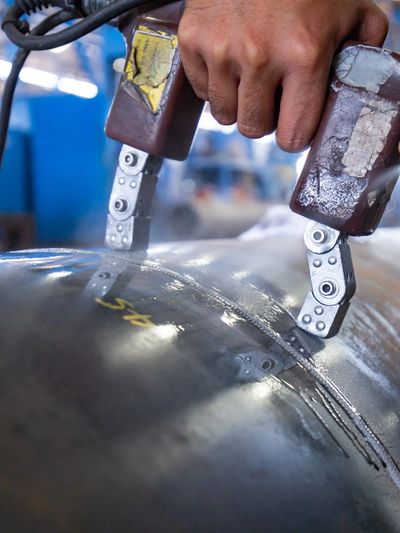Liquid Penetrant Testing (LPT) SERVICES

Introduction
Liquid Penetrant Testing (LPT), also known as Dye Penetrant Testing (DPT) or Liquid Penetrant Inspection (LPI), is a widely used non-destructive testing method for detecting surface-breaking defects in non-porous materials. The principle behind LPT is based on capillary action. A liquid penetrant, typically a colored dye or fluorescent material, is applied to the surface of the test object. The penetrant seeps into any surface defects through capillary action. After a certain dwell time, the excess penetrant is removed, and a developer is applied. The developer draws the trapped penetrant out of the defect, making it visible.
Application:
LPT is applicable to a wide range of materials, including metals, plastics, ceramics, and composites. It is commonly used in industries such as manufacturing, aerospace, automotive, and construction. LPT is utilized to detect surface cracks, porosity, leaks, and other surface defects that may compromise the integrity of the material.
Standard Code Reference:
Several standard codes and specifications govern liquid penetrant testing, including:
- ASTM E165: Standard Practice for Liquid Penetrant Testing for General Industry.
- ASTM E1417: Standard Practice for Liquid Penetrant Testing.
- ISO 3452: Non-destructive testing — Penetrant testing.
- ASME Section V Article 6: Liquid Penetrant Examination in Boiler and Pressure Vessel Code.
- EN 571: Non-destructive testing — Penetrant testing.
Advantages:
- Surface Detection: LPT is highly effective in detecting surface-breaking defects such as cracks, porosity, and other surface irregularities.
- Versatility: LPT can be used on various materials, including ferrous and non-ferrous metals, as well as non-metallic materials like ceramics and plastics.
- Cost-Effective: LPT is a relatively low-cost method compared to other non-destructive testing techniques, making it accessible for many applications and industries.
- Portable and Easy to Use: LPT equipment is portable and user-friendly, allowing for inspections in different locations and by personnel with varying levels of experience.
Limitations:
- Limited to Surface Defects: LPT is primarily focused on detecting surface-breaking defects. It may not be suitable for detecting internal flaws or defects located below the surface.
- Non-Porous Materials: LPT is not effective on highly porous materials or materials with rough surfaces, as the penetrant may be absorbed or trapped, making interpretation of results difficult.
- Surface Preparation: Proper surface preparation is essential for successful LPT. The surface must be clean, free of contaminants, and have good contrast with the penetrant to ensure accurate results.
- Time Constraints: LPT requires sufficient dwell time and observation time for accurate results. The process may be time-consuming, particularly when dealing with large areas or complex geometries.
It is important to refer to the specific standard codes, industry guidelines, and equipment manufacturer's instructions for proper implementation of liquid penetrant testing and interpretation of results.
Copyright © 2024 Brotherhood Technical Services Company - All Rights Reserved.
Powered by BTECH
This website uses cookies.
We use cookies to analyze website traffic and optimize your website experience. By accepting our use of cookies, your data will be aggregated with all other user data.